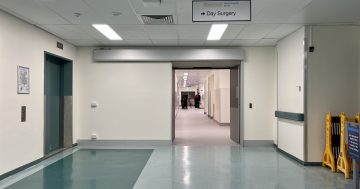
A recently proposed national framework suggests paramedics could also help ease pressure on emergency departments by supporting palliative care patients who wish to die at home. Photo: Michelle Kroll.
The Australian Productivity Commission has found more than $5 billion a year in savings could be achieved by better integrating digital technology into Australia’s healthcare system.
Its recently released research report claims making better use of data in electronic medical record systems could save up to $5.4 billion annually by reducing the time patients spend in hospital, and up to $355 million through fewer duplicated tests.
It also reports that up to 30 per cent of the tasks undertaken by the workforce could be automated using digital technology and artificial intelligence (AI), saving time that could be spent on caring for patients.
Productivity Commissioner Catherine de Fontenay said while Australia’s health system delivered some of the best outcomes of any country in the world, the cost of this care and wait times to access it were growing.
“The use of telehealth has exploded since 2020, but uptake of other digital-based services like remote patient monitoring and digital therapeutics has lagged behind,” Commissioner de Fontenay said.
“Despite major investment in the My Health Record (MHR) system ($2 billion), patient data is still fragmented and spread across different digital systems maintained by individual healthcare providers.
“We have made major strides integrating digital technology into health care but there are still a lot of potential savings and efficiency gains on the table that governments can help unlock.”
Commissioner de Fontenay said gaps in funding support for these services may be causing patients and practitioners to default to in-person care or forgo care entirely, even if it cost the system more in the long run. She recommended the government consider alternative funding approaches to target high-value uses of these new technologies, including the uptake of AI.
“AI could free up a lot of time and resources for clinicians that can be used to provide care for patients,” she said.
“Governments need to ensure our regulatory guardrails build trust in AI technology so our healthcare system can maximise the potential benefits.”
While the government awaits the appropriate regulation and testing of AI technology’s use in health care, the report points to other avenues for improvement.
Reduced travel time from greater use of telehealth is already delivering about $895 million a year in consumer gains. Other innovations such as digital therapeutics and remote monitoring also contribute by giving patients better access to care from their own homes.
The report says minimising the unintended consequences of restrictions on telehealth subsidies for consumers facing disadvantage would enable telehealth’s benefits to be enjoyed more widely, especially in regional, rural and remote communities.
The Commissioner said the useability of MHR (currently described as a ”shoebox of PDFs”) needed to improve in tandem with its coverage.
In the report, she supports the idea of improving MHR’s coverage by sharpening incentives for software providers to make information-sharing across systems more seamless.










